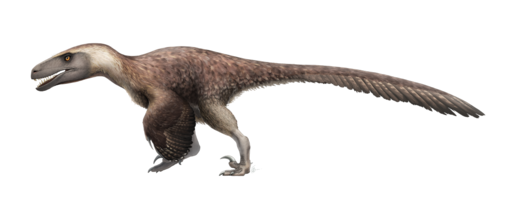The Giant Dromaeosaur
Utahraptor was a formidable predator that roamed North America during the Early Cretaceous period, approximately 125 million years ago.

| Meaning | Utah thief [Utah-raptor] |
| Pronunciation | YOU-tah-rap-tor |
| When: | Early Cretaceous (about 126 million years ago) |
| Where: | North America (USA, Utah) |
| What: | Theropod (dromaeosaurid, carnivorous) |
| Weight: | Estimated around 500 kg (1,100 pounds) |
| Length: | Approximately 6–7 meters (20–23 feet) |
| Diet: | Carnivorous (ate other dinosaurs) |
| Discovered: | First described by James Kirkland and colleagues in 1993 |
It belonged to the group of dinosaurs known as dromaeosaurs, which are often referred to as “raptors.”
Utahraptor was larger than most other dromaeosaurs, reaching lengths of about 5-7 meters (16-23 feet) and weighing around 500 kilograms (1,100 pounds).
It had sharp, curved claws on its feet, which it likely used to grasp and immobilize prey.
Utahraptor was also equipped with a long, stiffened tail that aided in balance and agility during hunting.
Fossils of Utahraptor have been found in Utah, USA from where it gained its name.
